|
Algae, like all plants, require carbon dioxide, water with nutrients and sunlight for growth. The VAT bioreactor technology is ideal for location adjacent to heavy producers of carbon dioxide such as coal fired power plants, refineries or manufacturing facilities, as the absorption of CO2 by the algae significantly reduces greenhouse gases while also removing a large portion of the harmful pollutants.-Source
90% of the weight of dry algae supposedly contains recovered carbon from atmosphere - You cant have a better carbon absorber than this! It can actually generate a revenue stream for the companies using this by making biodiesel as well. What more can they ask for?? make money and clean up the environment as well!.
One of the pioneers of the ORGANIC vertical growth system is the Valcent group. Vertical farming is organic (not hydroponic) and uses 1-20th the amount of water that required in a field grown crop. There is a need to implement these systems in major cities as they also reduce the carbon foot print and energy costs to transport food and meals from once source to another.
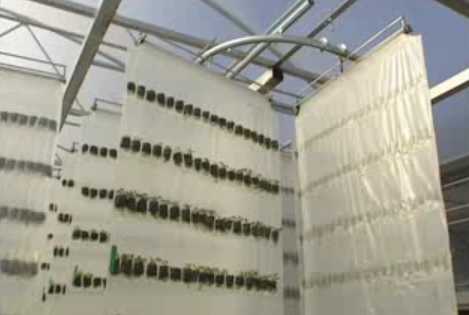
The Vertical farming system
The following is a summery of the advantages described by the valcent group:
Revolutionary High Density Vertical Growth (HDVG) system, now producing vegetables within its greenhouse production plant in El Paso, Texas. The HDVG technology provides a solution to rapidly increasing food costs caused by transportation/fuel costs spiraling upwards with the cost of oil. Together with higher cost comes a reduction in availability and nutritional values in the food we consume.
Developed over several years by Valcent's research and development partner, Pagic Inc., the system is designed to grow vegetables and other foods much more efficiently and with greater food value than in agricultural field conditions. The HDVG system demonstrates the following characteristics:
* Produces approximately 20 times the normal production volume for field crops
* Requires 5% of the normal water requirements for field crops
* Can be built on non arable lands and close to major city markets
* Can work in a variety of environments: urban, suburban, countryside, desert etc.
* Does not use herbicides or pesticides
* Will have very significant operating and capital cost savings over field agriculture
* Will drastically reduce transportation costs to market resulting in further savings, higher quality and fresher foods on delivery, and less transportation pollution
* Will be easily scalable from small to very large food production situations -Source
The Valcent group have taken this concept to another leval and applied it to the renewable energy sector to create a clean, green process which uses only light, water and air to create fuel. Valcent's HDVB algae-to-biofuel technology mass produces algae, vegetable oil which is suitable for refining into a cost-effective, non-polluting biodiesel.
This means the food growing vertical farming in the cities can be powered by its own infrastructure. Here are some educational videos showing some benefits of this neglected and critically needed technology.
Vertical farming
Vertical Algae biofuel Growing
Parliamentary backing given to Valcent
Further valid research which proves all the critical reasoning for the needed implementation of these systems into urban area's can be found on the Verticalfarm web site.
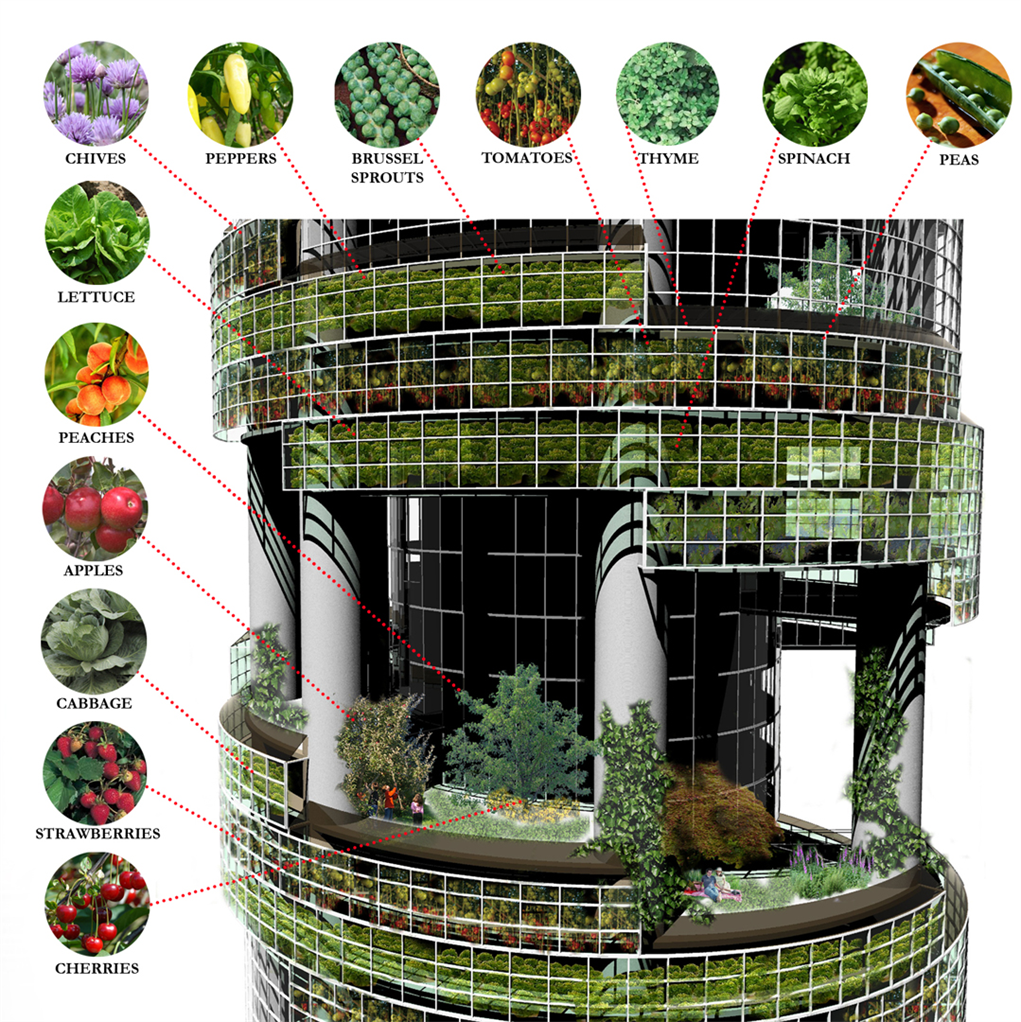
Vertical farm Design
By the year 2050, nearly 80% of the earth's population will reside in urban centers. Applying the most conservative estimates to current demographic trends, the human population will increase by about 3 billion people during the interim. An estimated 109 hectares of new land (about 20% more land than is represented by the country of Brazil) will be needed to grow enough food to feed them, if traditional farming practices continue as they are practiced today. At present, throughout the world, over 80% of the land that is suitable for raising crops is in use (sources: FAO and NASA). Historically, some 15% of that has been laid waste by poor management practices. What can be done to avoid this impending disaster? A Potential Solution: Farm Vertically- Source
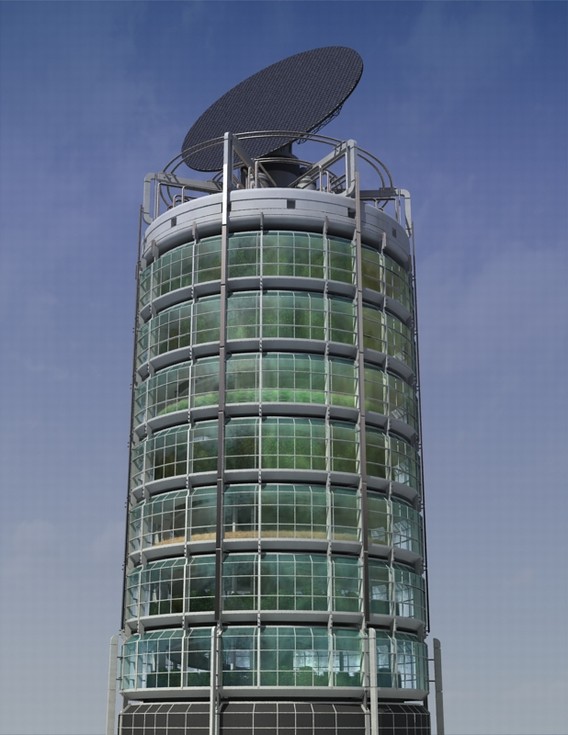
Vertical farm Design 2
The next design has been designed by Knafo Klimodone.
called "Agro-housing", this winning design was proposed for construction in China.Agro-housing blends urban and rural living by creating vertical greenhouse space within high-rise apartments.
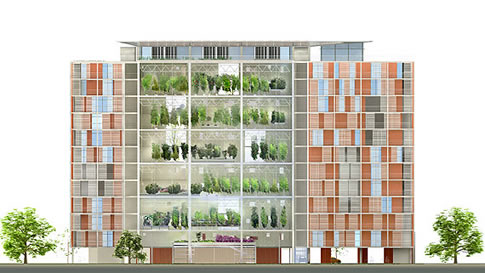
The greenhouse climate is controlled through natural ventilation and a heating system. A roof-top terrace garden offers open-air green space for recreation and informal gathering.
The Agro-housing concept presents a new urban and social vision that addresses this chaotic urbanisation problem by creating a new order in the city and, more Winning design: Chinaspecifically, in the housing environment. The idea behind Agro-housing is to create a space close to home where families can produce their own food supply according to their own abilities, tastes and choices to promote independent living, freedom and potentially provide additional income. In addition, these greenhouse spaces become a natural gathering place for the community to interact. Agro-housing is a place for living, but in essence, it is a model for a new urbanity, contributing to the preservation of traditions and community values and diminishing the trials of rural migration. Source
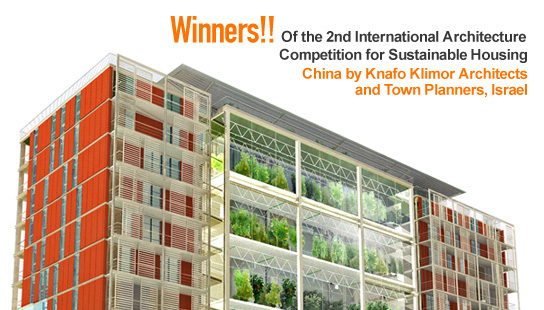
Source
Here is a presentation video of the project.
Compact urbun food growing systems for cities is a realistic way to cut carbon footprint, reduce emissions, save energy plus ensure security of food production. Another system which could be powered by the Valcent group Bio fuel is the Omega Garden system. This is a hydroponic system where the Valcent system is organic.
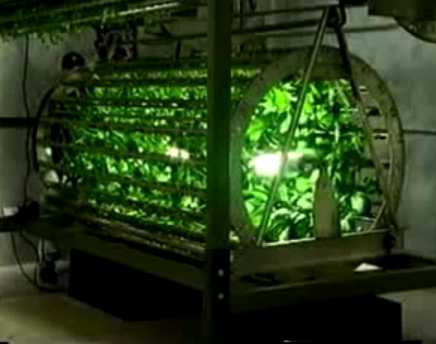
The Omega garden as featured on this program
This is a revolutionary rotary hydroponic system designed with convenience, simplicity, and maximum yield in mind.
There are other methods of hydroponic food production which can be implemented in the mean time whilst the organic fields are repaired. One of them is Aeroponics grow systems, which are the World's first Self contained growing Systems that are able to combine Solar Power & all growing methods.
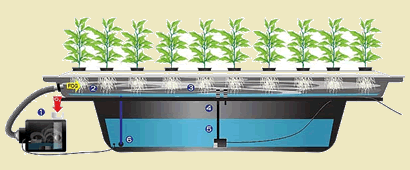
Source
The Ultrasonic Aeroponic technique (a NASA discovery) allows the growth of plants in an air/mist environment without the use of soil. This high performance food production technology will rapidly grow crops using 99% less water and 50% less nutrients in 45% less time.
Aquaponics Systems
Aquaponics is getting more and more popular as the Green Revolution swiftly sweeps across the globe. Aquaponics is a sustainable food source and a new way of becoming completely self sustainable. What is Aquaponics? Aquaponics is the combination of using Hydroponics and Aquaculture together. Hydroponics is mainly the process of growing plants in water with out the traditional use of soil.

Aquaponics - Source
One of the benefits of Hydroponics is that a greater number of crops can be planted in a smaller area, and soil based pest are eliminated. Aquaculture is best described as a fish farm. Fish that are grown in a controlled environment using Aquaculture usually take up less space and water than traditional fish hatcheries or lakes. Another benefit of Aquaculture is that the rate and size of the fish along with what they are consuming is monitored for your desired fish product.
Earth Solutions Farm in a Box Aquaponic
These concepts can also potentially work with food first who are the institute for food and development Policy/Food.Their goals are help by analyzing the root causes of global hunger, poverty, and ecological degradation and developing solutions in partnership with movements working for social change.
This upgrade will prevent our current wasteful and destructive architecture. These design concepts are critically needed to be implemented into the building code and MUST serve as an example to builders world wide towards sustainable development. Education and law is a must for these systems to succeed.
Panacea will pledge to support their education and will apply grants to help implement their eduction into faculties. Panacea will also begin organization to mandate their contribution into the building code.Please sign the petition here to support and address this directly. To support any of these systems directly please contact them direct.
Research Links
Farming in suburbia
|